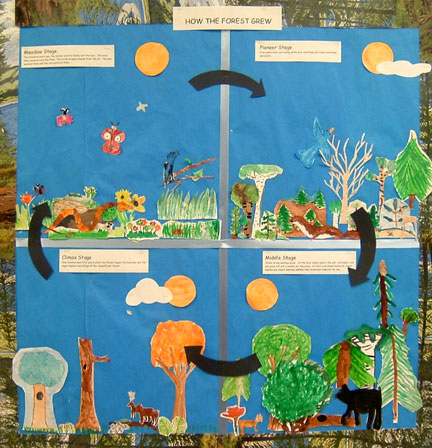
|
Here are our murals showing how an open meadow changed into a forest over the course of more than one hundred years. This process is called ecological succession. It is the process in which the community in a particular place is gradually replaced by another community. First, there is an open meadow. Maybe the land had been cleared for its trees. Maybe a farmer used it to plant his crops. Maybe a natural disaster like a fire or insect infestation destroyed the woods. Weeds and wildflowers sprout. Berry bushes grow. Then the sun loving trees like pines, aspen, poplars and birches take root. This is the pioneer stage. Then as these trees grew taller, they provided protection and shade for seedlings that don't like direct sunlight. Ash, red oak and red maple seedlings sprout, grow tall and start crowding out the white pines. After eighty years or so, the pioneer white pines and aspen die out.This is a middle stage forest. In this darker forest, where years of decaying leaves and stumps have formed a rich humus, beeches, hemlocks and sugar maples take root and grow. They form a dense understory and push their way to the sun. Almost two hundred years later, the beeches, maples and hemlocks dominate the woods. This climax stage forest is home to many wild creatures that find food, water, shelter and space to raise their young.
|